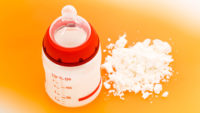Danish, Swedish Institutions Form Consortium to Establish EU Reference Laboratory for AMR

Image credit: Edward Jenner via Pexels
Denmark and Sweden have formed a public health consortium to jointly establish an EU reference laboratory (EURL) for antimicrobial resistance (AMR), which will contribute to diagnostics and infection preparedness. The AMR EURL is one of six EURLs designated by the European Commission (EC) for public health with the aim of further strengthening the EU’s defenses in the face of serious cross-border threats.
Based in the One Health approach, the recently designated EURLs will support national public health laboratories by ensuring data comparability and capacity strengthening on laboratory methods at the EU level, including efforts to align on diagnostics and testing for surveillance, notification, and reporting of diseases. (Aside from the AMR EURL, the five other EURLs will focus on vector-borne viral pathogens; emerging rodent-borne and zoonotic viral pathogens; emerging, high-risk zoonotic bacterial pathogens; Legionella; and diphtheria and pertussis).
The AMR EURL has been appointed by the EC to a consortium comprising Statens Serum Institut (SSI) and the DTU National Food Institute in Denmark, and the Clinical Microbiology Region Kronoberg/the European Committee on Antimicrobial Susceptibility Testing Development Laboratory (EUCAST EDL) in Sweden. The appointment runs over a seven-year period. SSI, DTU National Food Institute, and EDL will strive to create continuity in Europe’s preparedness for and fight against AMR.
The three partners contribute to the consortium in unique ways. EDL will lead the development of standardized methods for the quantitative measurement of AMR in bacteria, DTU National Food Institute will leverage its expertise in capacity development for AMR monitoring, and SSI will focus on whole genome sequencing (WGS) for epidemiology, monitoring, and outbreak detection.
The AMR EURL is tasked with advising the EC on the organization, implementation, and evaluation of surveillance systems for AMR, as well as with training other laboratories to ensure, for example, that sensitivity tests meet quality requirements, and that methods and data are comparable.
Looking for a reprint of this article?
From high-res PDFs to custom plaques, order your copy today!






